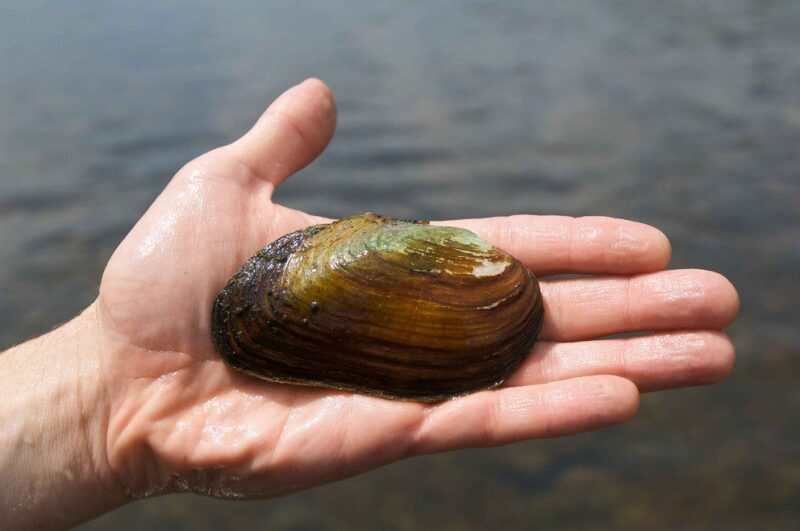Elevated concentrations of strontium, an element associated with oil and gas waste waters, have accumulated in the shells of freshwater mussels downstream from wastewater disposal sites, according to researchers from Penn State and Union College.
"Freshwater mussels filter water, and, when they grow a hard shell, the shell material records some of the water quality with time," said Nathaniel Warner, assistant professor of environmental engineering at Penn State. "Like tree rings, you can count back the seasons and the years in their shell and get a good idea of the quality and chemical composition of the water during specific periods of time."
In 2011, it was discovered that, despite treatment, water and sediment downstream from wastewater disposal sites still contained chemicals and had become radioactive. In turn, drinking water was contaminated and aquatic life, such as the freshwater mussel, was dying. In response, Pennsylvania requested that wastewater treatment plants not treat and release water from unconventional oil and gas drilling, such as that in the Marcellus Shale. As a result, the industry turned to recycling most of its waste water. However, researchers are still uncovering the long-lasting effects, especially during the 3-year boom between 2008 and 2011, when more than 2.9 billion L of waste water was released into Pennsylvania's waterways.
"Freshwater pollution is a major concern for both ecological and human health," said David Gillikin, professor of geology at Union College and coauthor on the study. "Developing ways to retroactively document this pollution is important to shed light on what's happening in our streams."
The researchers began by collecting freshwater mussels from the Alleghany River, both 100 m upstream and 1 to 2 km downstream of a National Pollutant Discharge Elimination System-permitted wastewater disposal facility in Warren, Pennsylvania, as well as mussels from two other rivers—the Juniata and Delaware—that had no reported history of oil and gas discharge.
Once at the laboratory, they dissected the shell and then drilled and collected the powder from the shell layer by layer to look for isotopes of two elements: oxygen, used to determine the year and season, and strontium, both of which carry a distinctive signature of the rock formation where they were produced. The results were recently published in Environmental Science & Technology.
What the team found was significantly elevated concentrations of strontium in the shells of the freshwater mussels collected downstream of the facility, whereas the shells collected upstream and from the Juniata and Delaware Rivers showed little variability and no trends over time.

